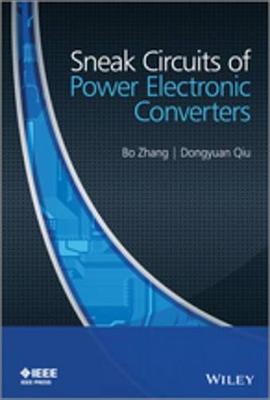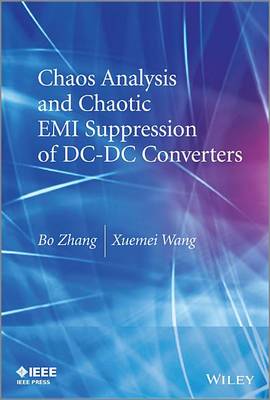Wiley - IEEE
3 total works
Methodology and Technology for Power System Grounding
by Jinliang He, Rong Zeng, and Bo Zhang
Published 1 January 2012
Grounding is the fundamental measures to ensure the safe operation of power systems, including power apparatus and control/monitoring systems, and guarantee the personal safety. Grounding technology is an interdiscipline involving electrical engineering, high voltage technology, electric safety, electromagnetics, numerical analysis, and geological exploration Methodology and Technology for Power System Grounding: * Covers all topics related to power system grounding * Presents fundaments and theories of grounding systems * Well balances technology and methodology related to grounding system design * Helps to understand the grounding analysis softwares * Highlights the advanced research works in the field of grounding systems * Comprehensively introduces numerical analysis methods * Discovers impulse ionization phenomenon of soil around the grounding conductors * Touches on lightning impulse characteristics of grounding devices for towers and buildings As a comprehensive treatment of the topic, Methodology and Technology for Power System Grounding is ideal for engineers and researchers in power system, lightning protection, and grounding.
The book will also better equip postgraduates, senior undergraduate students in electrical engineering.
The book will also better equip postgraduates, senior undergraduate students in electrical engineering.
The first treatment of advanced knowledge of electrical sneak circuits and its analysis method in power electronics The work on sneak circuit and its analysis methods for power converters contributes to the reliability of power electronic systems worldwide. Most books in the subject concentrate on electronic systems, but this book is perhaps the first to examine power electronic systems. It describes the sneak circuit phenomena in power converters, introduces some SCA methods for power electronic systems and proposes how to eliminate and make use of sneak circuits. The book is divided into three separate sections.
Firstly, the sneak circuit paths and sneak circuit operating conditions are discussed in different kinds of power converters, including resonant switched capacitor converters, basic DC-DC converters, soft-switching converters and Z-source converters; Secondly, the sneak circuit analysis guidelines for power converters based on generalized matrix, adjacency matrix and Boolean matrix are presented respectively; Thirdly, the sneak circuit elimination techniques are introduced and verified in several power converters, with applications of sneak circuits described in conclusion. Written by a lead author with extensive academic and industrial experience, the book provides a complete introduction and reference to students and professionals alike. Contents include: Fundamental Concepts, SCA of Resonant Switched Capacitor Converters, SC of DC-DC Converters, SC Analysis Method (including Boolian Matrix), and Applications of SC in Power Converters.
* Highlights the advanced research works in the sneak circuit analysis, by a leading author in the field * Original in its treatment of power electronics converters; most other books concentrating on electronics systems, and aimed at both introductory and advanced levels * Offers guidelines for industry professionals involved in the design of power electronic systems, enabling early detection of potential problems Essential reading for Graduate students in Electrical Engineering: Engineers and Researchers in Power Electronics
Firstly, the sneak circuit paths and sneak circuit operating conditions are discussed in different kinds of power converters, including resonant switched capacitor converters, basic DC-DC converters, soft-switching converters and Z-source converters; Secondly, the sneak circuit analysis guidelines for power converters based on generalized matrix, adjacency matrix and Boolean matrix are presented respectively; Thirdly, the sneak circuit elimination techniques are introduced and verified in several power converters, with applications of sneak circuits described in conclusion. Written by a lead author with extensive academic and industrial experience, the book provides a complete introduction and reference to students and professionals alike. Contents include: Fundamental Concepts, SCA of Resonant Switched Capacitor Converters, SC of DC-DC Converters, SC Analysis Method (including Boolian Matrix), and Applications of SC in Power Converters.
* Highlights the advanced research works in the sneak circuit analysis, by a leading author in the field * Original in its treatment of power electronics converters; most other books concentrating on electronics systems, and aimed at both introductory and advanced levels * Offers guidelines for industry professionals involved in the design of power electronic systems, enabling early detection of potential problems Essential reading for Graduate students in Electrical Engineering: Engineers and Researchers in Power Electronics
Chaos Analysis and Chaotic EMI Suppression of DC-DC Converters
by Bo Zhang and Xuemei Wang
Published 1 January 2014
Introduces chaos theory, its analytical methods and the means to apply chaos to the switching power supply design DC-DC converters are typical switching systems which have plenty of nonlinear behaviors, such as bifurcation and chaos. The nonlinear behaviors of DC-DC converters have been studied heavily over the past 20 years, yet researchers are still unsure of the practical application of bifurcations and chaos in switching converters. The electromagnetic interference (EMI), which resulted from the high rates of changes of voltage and current, has become a major design criterion in DC-DC converters due to wide applications of various electronic devices in industry and daily life, and the question of how to reduce the annoying, harmful EMI has attracted much research interest. This book focuses on the analysis and application of chaos to reduce harmful EMI of DC-DC converters. After a review of the fundamentals of chaos behaviors of DC-DC converters, the authors present some recent findings such as Symbolic Entropy, Complexity and Chaos Point Process, to analyze the characters of chaotic DC-DC converters.
Using these methods, the statistic characters of chaotic DC-DC converters are extracted and the foundations for the following researches of chaotic EMI suppression are reinforced. The focus then transfers to estimating the power spectral density of chaotic PWM converters behind an introduction of basic principles of spectrum analysis and chaotic PWM technique. Invariant Density, and Prony and Wavelet analysis methods are suggested for estimating the power spectral density of chaotic PWM converters. Finally, some design-oriented applications provide a good example of applying chaos theory in engineering practice, and illustrate the effectiveness on suppressing EMI of the proposed chaotic PWM.
* Introduces chaos theory, its analytical methods and the means to apply chaos to the switching power supply design * Approaches the subject in a systematic manner from analyzing method, chaotic phenomenon and EMI characteristics, analytical methods for chaos, and applying chaos to reduce EMI (electromagnetic interference) * Highlights advanced research work in the fields of statistic characters of nonlinear behaviors and chaotic PWM technology to suppress EMI of switching converters * Bridges the gap between numerical theory and real-world applications, enabling power electronics designers to both analyze the effects of chaos and leverage these effects to reduce EMI
Using these methods, the statistic characters of chaotic DC-DC converters are extracted and the foundations for the following researches of chaotic EMI suppression are reinforced. The focus then transfers to estimating the power spectral density of chaotic PWM converters behind an introduction of basic principles of spectrum analysis and chaotic PWM technique. Invariant Density, and Prony and Wavelet analysis methods are suggested for estimating the power spectral density of chaotic PWM converters. Finally, some design-oriented applications provide a good example of applying chaos theory in engineering practice, and illustrate the effectiveness on suppressing EMI of the proposed chaotic PWM.
* Introduces chaos theory, its analytical methods and the means to apply chaos to the switching power supply design * Approaches the subject in a systematic manner from analyzing method, chaotic phenomenon and EMI characteristics, analytical methods for chaos, and applying chaos to reduce EMI (electromagnetic interference) * Highlights advanced research work in the fields of statistic characters of nonlinear behaviors and chaotic PWM technology to suppress EMI of switching converters * Bridges the gap between numerical theory and real-world applications, enabling power electronics designers to both analyze the effects of chaos and leverage these effects to reduce EMI


